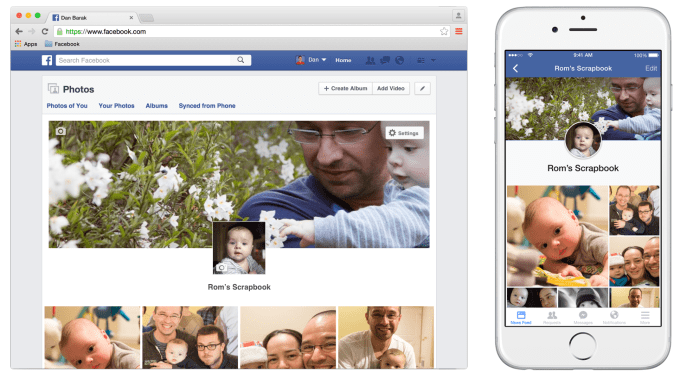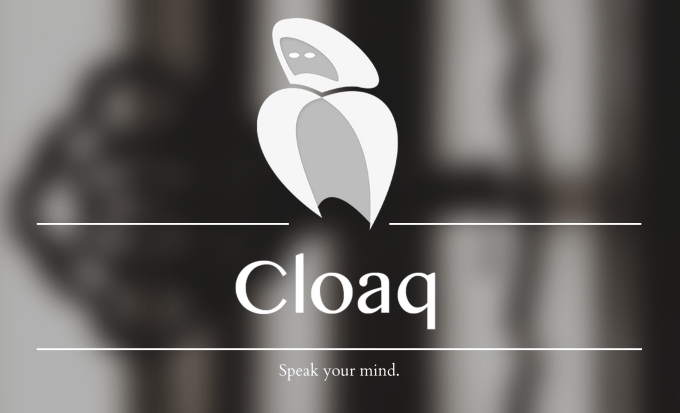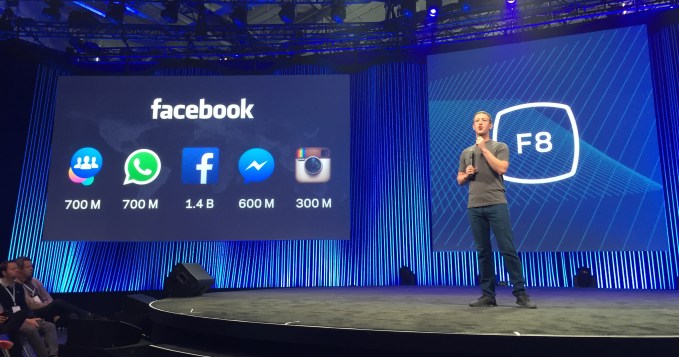Social Media Marketing World is back for the third time in San Diego this week. Many of the big names in the social media space are here including Guy Kawasaki, Chris Brogan, Mari Smith, and more. A dream for any social media marketer, this event covers every topic from how to take your social media global, to Facebook advertising strategies, and how to get started with your own podcast.
At his opening keynote, CEO of Social Media Examiner, Mike Stelzner, started his presentation with an image of “The Dress” and of course took a poll from the crowd: Blue and black, or white and gold? The crowd was about even for both (I see blue and black), but Stelzner made the point that this is a great example of how we can all be looking at the same thing and come away with something different. It’s important to realize that this same thing can happen with our own social marketing.

Stelzner went on to discuss some of the major trends that we are seeing now in social media, with the main one being video.
1. YouTube is powerful. More than half (56%) of marketers say they want to improve their knowledge of YouTube, and two thirds of marketers plan to increase their use of it. However, Facebook, and even Twitter, are challenging that power. In fact, Facebook is actually degrading YouTube video exposure in the newsfeed.
2. Native video is now the best content to post to Facebook. Mark Zuckerberg has noted video is a big priority for the channel right now. Video will now automatically be played in the newsfeed, which helps entice people to stop and watch. Facebook now even allows you to embed your videos into your blog posts, similarly to how you can with YouTube.
Twitter, too, has put an emphasis on video, with the announcement of their new Video on Twitter feature in February. This completely changes the game. Brands just went from 140 characters, to sharing 30 seconds of whatever content they want. This is a big opportunity for brands to not only be better storytellers, but also be able to show their personalities and become more human.
3. The new, cool app Meerkat is also taking video on Twitter to new lengths. Taking SXSW by storm, Meerkat is an app that allows you to stream live video to your followers on Twitter. Guy Kawasaki actually used Meerkat to live stream his entire presentation at Social Media Marketing World yesterday.
Although native video is still somewhat of an untapped frontier, according to Stelzner, 72% of marketers plan on increasing their use of video in 2015. So whether you hire a camera crew, or strap on your GoPro, it’s time to make video a priority in your marketing strategy.

Some other social trends that Stelzner highlighted are:
4.Podcasting is growing. With the booming success of the podcast Serial, we are now seeing more mainstream media outlets and big businesses are all starting to create their own podcasts. Even though it’s still a small space with only 9.7% of marketers participating in podcasts, 42% of marketers say that they want to learn more about podcasting, which is up from 28% in 2014.
5.Social reporting and ROI is on the rise. Nearly half (42%) of marketers are now able to measure and report on social ROI. A vast majority (78%) of marketers are able to show that social media increases traffic to their web properties, although 88% of marketers still say they want to know how to improve it.
6.Facebook is BIG for marketers…still. Even though Facebook has changed, then changed again their algorithms for businesses to get their content seen, 51% of marketers still say that it’s the most important social channel. In fact, the use of Facebook for marketing is actually growing, with 62% of marketers saying that they are increasing their use of Facebook in 2015.

What are some of the biggest trends that you’re seeing in social media today?

 For the first time, children under 13 are allowed to have an official presence on Facebook. They still can’t have a profile, but their parents can now tag photos of them (or pet) to create a “Scrapbook”. This lets parents collect photos of their baby, toddler, or pre-teen in a centralized place they can share with friends or loved ones. Scrapbook will first roll out in the US…
For the first time, children under 13 are allowed to have an official presence on Facebook. They still can’t have a profile, but their parents can now tag photos of them (or pet) to create a “Scrapbook”. This lets parents collect photos of their baby, toddler, or pre-teen in a centralized place they can share with friends or loved ones. Scrapbook will first roll out in the US…  Sprinklr just announced that it has raised $46 million in new funding, at what it says is a valuation of more than $1 billion.
The round was led by existing investors Battery Ventures, Intel Capital, and Iconiq Capital and brings the company’s total funding to $123.5 million. (Sprinklr’s last funding of $40 million was announced just under a year ago.)
Sprinklr just announced that it has raised $46 million in new funding, at what it says is a valuation of more than $1 billion.
The round was led by existing investors Battery Ventures, Intel Capital, and Iconiq Capital and brings the company’s total funding to $123.5 million. (Sprinklr’s last funding of $40 million was announced just under a year ago.)  With every big social content network comes tools and services for brands to leverage those platforms. For Snapchat, that tool is Naritiv. The startup has been building out an influencer network that they can leverage to build out Snapchat campaigns for various brands, complete with analytics and reporting tools. Naritiv launched out of the Disney Accelerator, powered by Techstars, and was…
With every big social content network comes tools and services for brands to leverage those platforms. For Snapchat, that tool is Naritiv. The startup has been building out an influencer network that they can leverage to build out Snapchat campaigns for various brands, complete with analytics and reporting tools. Naritiv launched out of the Disney Accelerator, powered by Techstars, and was…  Phones can make us jerks. They let us ignore friends, cancel plans last-minute, and annoy those around us in public. But this month, we got a whole new way to abuse our mobile devices. Unless we can manage how we interrupt each other, it could ruin one of the most promising modern communication mediums: live streaming.
Phones can make us jerks. They let us ignore friends, cancel plans last-minute, and annoy those around us in public. But this month, we got a whole new way to abuse our mobile devices. Unless we can manage how we interrupt each other, it could ruin one of the most promising modern communication mediums: live streaming.  The trend toward anonymous social applications may be on the downswing for some, but others believe there’s still a place for online discussions where users don’t have to reveal their real identity. Case in point: Cloaq, the anonymous app where users never had to provide an identifying piece of information, like a phone number or email, is today launching out of beta with a new twist.
The trend toward anonymous social applications may be on the downswing for some, but others believe there’s still a place for online discussions where users don’t have to reveal their real identity. Case in point: Cloaq, the anonymous app where users never had to provide an identifying piece of information, like a phone number or email, is today launching out of beta with a new twist.  A company can’t easily shore up its weaknesses, especially when it grows to the size of Facebook, but the social network has managed to slowly but surely reinvent itself on mobile in a way that makes sense and resonates with users. FB surely stumbled along the path, and some of its efforts even drew outright scorn, but presumably the ill-fated experiments informed recent successes, and…
A company can’t easily shore up its weaknesses, especially when it grows to the size of Facebook, but the social network has managed to slowly but surely reinvent itself on mobile in a way that makes sense and resonates with users. FB surely stumbled along the path, and some of its efforts even drew outright scorn, but presumably the ill-fated experiments informed recent successes, and…  Leading Facebook ad company Nanigans is announcing that it has raised $24 million in Series B funding. In this case, it’s is taking money from a big Asian investor — Chinese Internet company Cheetah Mobile. (Cheetah led the round, while Avalon Ventures and Wellington Management Company also participated.) Naturally, one of the goals is to accelerate Nanigans’ growth in…
Leading Facebook ad company Nanigans is announcing that it has raised $24 million in Series B funding. In this case, it’s is taking money from a big Asian investor — Chinese Internet company Cheetah Mobile. (Cheetah led the round, while Avalon Ventures and Wellington Management Company also participated.) Naturally, one of the goals is to accelerate Nanigans’ growth in…